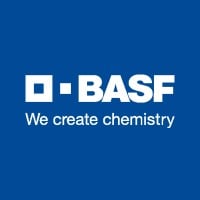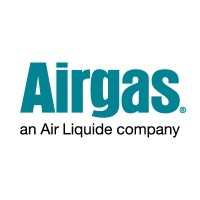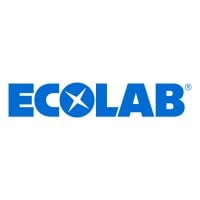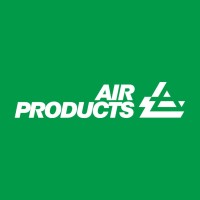Company Cyber Security Posture
NANA
NA Company Details
NA
NA
NA
NA
NA
NA
Scan still pending
NA
NA
Between 200 and 800
This score is AI-generated and less favored by cyber insurers, who prefer the TPRM score.
 NA Global Score
NA Global Score.png)

Company Scoring based on AI Models
| Model Name | Date | Description | Current Score Difference | Score |
|---|---|---|---|---|
| AVERAGE-Industry | 03-12-2025 | This score represents the average cybersecurity rating of companies already scanned within the same industry. It provides a benchmark to compare an individual company's security posture against its industry peers. | N/A | Between 200 and 800 |
Company Cyber Security News & History
| Entity | Type | Severity | Impact | Seen | Url ID | Details | View |
|---|
Company Subsidiaries

NA
Access Data Using Our API

Get company history
.png)
NA Cyber Security News
Bain Capital Private Equity Acquires DSM Sinochem Pharmaceuticals
DSP is the leading company in beta-lactam antibiotics, and also provides next-generation statins and anti-fungals. DSP develops, produces and ...
Pirelli says talks over dispute with top shareholder end without a deal
May 14 (Reuters) - Italian tyremaker Pirelli (PIRC.MI) , opens new tab said on Wednesday that talks to try to mend relations with its largest ...
Pirelli set to declare end of Chinese investor's control over governance, paper says
Chinese and Italian shareholders in Pirelli have been at odds over the group's governance, with Sinochem posing a hurdle to Pirelli's U.S. ...
Pirelli postpones board showdown to Thursday
Discussions are ongoing between Pirelli and Sinochem on how to further reduce the Chinese conglomerate's influence on the tyremaker, the sources ...
China’s Sinochem Will Sell Logistics Arm in Rare Privatization Move
A Chinese coal magnate is set to buy the logistics arm of China's industrial conglomerate Sinochem International Corp., in the biggest-ever ...
Italy studies potential Pirelli governance breach by Sinochem
Italy is investigating a possible breach by China's Sinochem, the top investor in tyremaker Pirelli , of provisions imposed to protect the ...
The 5 Biggest Chinese Oil Companies
Read about the top five Chinese oil companies as measured by revenues, and learn a little more about their business operations.
Sinochem executives on Pirelli board may be in breach of Italian rules
Italy is checking whether the presence of Sinochem executives on Pirelli's board is in breach of measures Rome imposed to protect the ...
Pirelli board postpones financial report approval to April 28
Pirelli has postponed to April 28 the conclusions of its board meeting which had been scheduled to end on Thursday, the Italian tyremaker ...

NA Similar Companies

BASF
At BASF, we create chemistry for a sustainable future. Our ambition: We want to be the preferred chemical company to enable our customers’ green transformation. We combine economic success with environmental protection and social responsibility. Around 112,000 employees in the BASF Group contribute

Airgas
Airgas, an Air Liquide company, is a leading U.S. supplier of industrial, medical and specialty gases, as well as hardgoods and related products; one of the largest U.S. suppliers of safety products; and a leading U.S. supplier of ammonia products and process chemicals. Dedicated to improving the

Ecolab
A trusted partner for millions of customers, Ecolab (NYSE:ECL) is a global sustainability leader offering water, hygiene and infection prevention solutions and services that protect people and the resources vital to life. Building on a century of innovation, Ecolab has annual sales of $15 billion, e

ICI Paints
ICI is now part of AkzoNobel, the world's largest coatings manufacturer, the number one in decorative paints and performance coatings, and a leading supplier of specialty chemicals developed for a wide range of markets. ICI’s businesses - National Starch and ICI Paints - serve diverse consumer a

National Academy of Sciences of Ukraine
Yu. Delimarskii Department of electrochemistry of molten salts - investigations in the field of electrochemistry of molten salts - electrodeposition of refractory metals of V-IV period (W, Mo, Cr, Ta, Nb) in ionic melts - electrochemical synthesis of refractory compounds (carbides, borides, sili

Air Products
Air Products (NYSE:APD) is a world-leading industrial gases company in operation for over 80 years focused on serving energy, environmental, and emerging markets. The Company has two growth pillars driven by sustainability. Air Products’ base business provides essential industrial gases, related equ

Frequently Asked Questions
Explore insights on cybersecurity incidents, risk posture, and Rankiteo's assessments.
NA CyberSecurity History Information
How many cyber incidents has NA faced?
Total Incidents: According to Rankiteo, NA has faced 0 incidents in the past.
What types of cybersecurity incidents have occurred at NA?
Incident Types: The types of cybersecurity incidents that have occurred include .
Additional Questions
What Do We Measure?
















Every week, Rankiteo analyzes billions of signals to give organizations a sharper, faster view of emerging risks. With deeper, more actionable intelligence at their fingertips, security teams can outpace threat actors, respond instantly to Zero-Day attacks, and dramatically shrink their risk exposure window.
These are some of the factors we use to calculate the overall score:
Identify exposed access points, detect misconfigured SSL certificates, and uncover vulnerabilities across the network infrastructure.
Gain visibility into the software components used within an organization to detect vulnerabilities, manage risk, and ensure supply chain security.
Monitor and manage all IT assets and their configurations to ensure accurate, real-time visibility across the company's technology environment.
Leverage real-time insights on active threats, malware campaigns, and emerging vulnerabilities to proactively defend against evolving cyberattacks.




